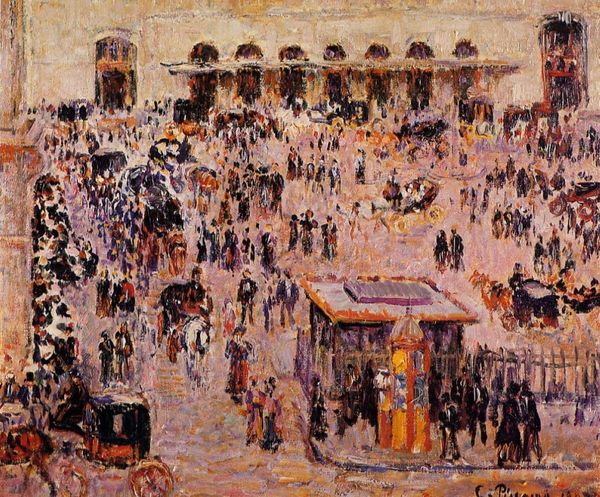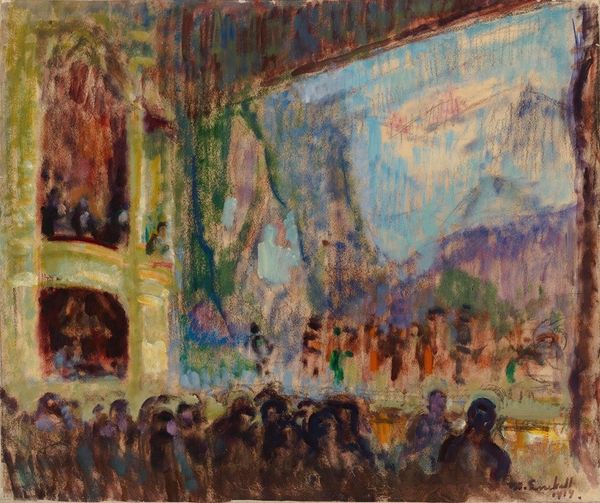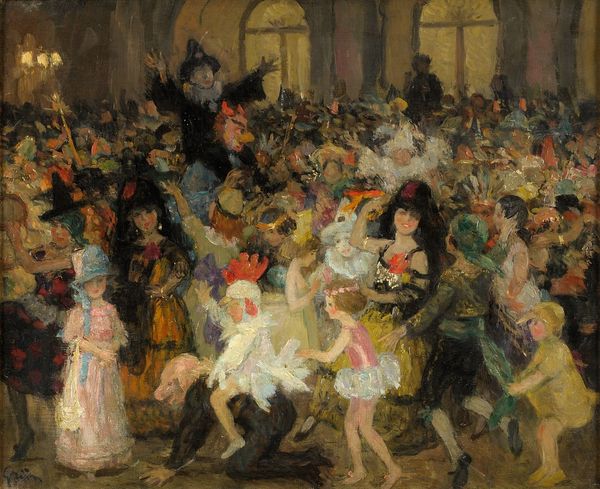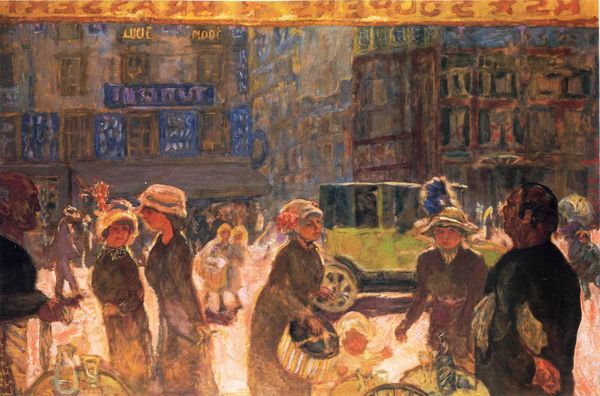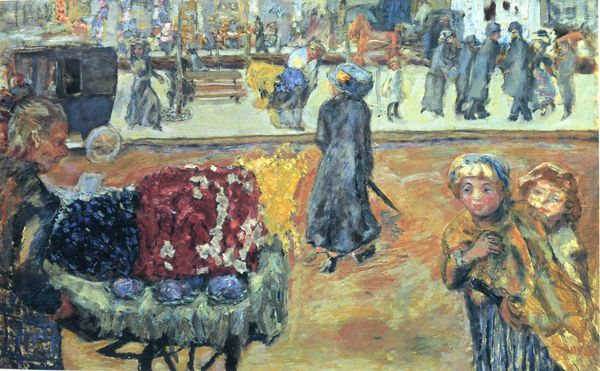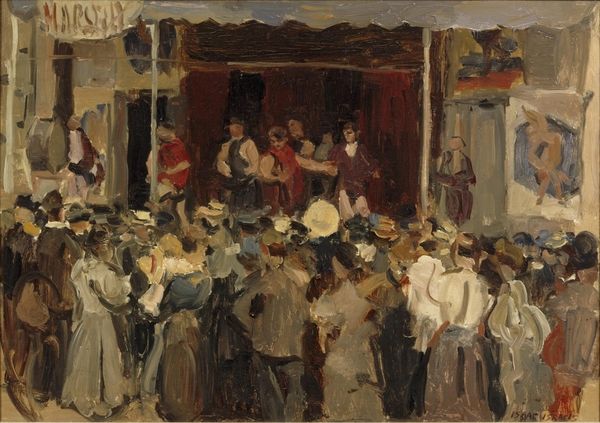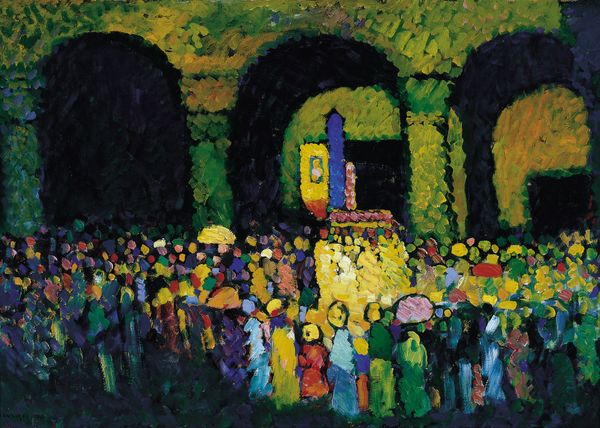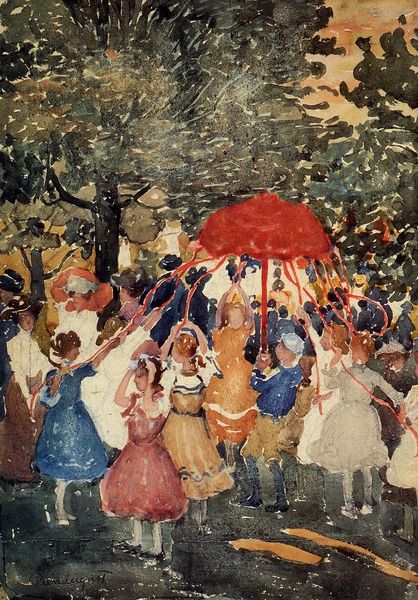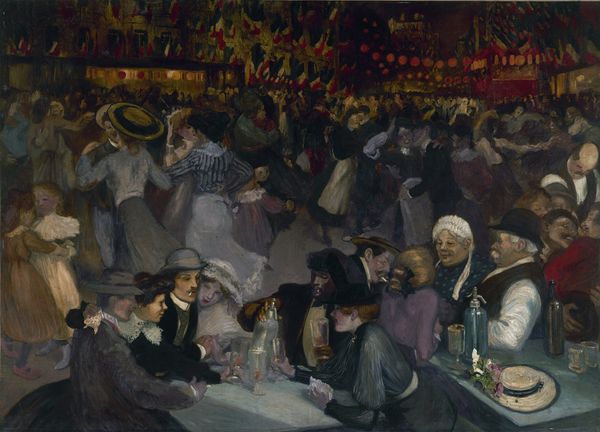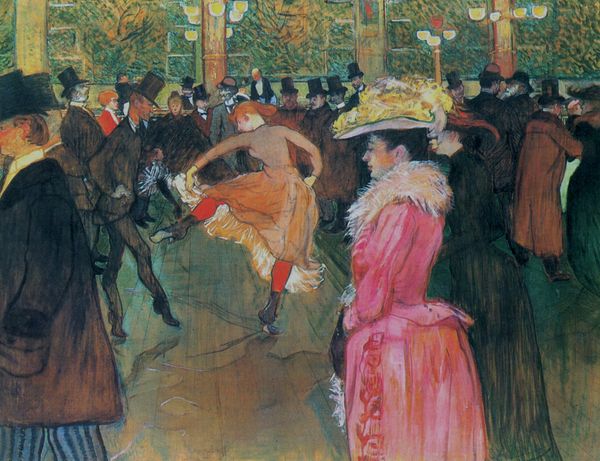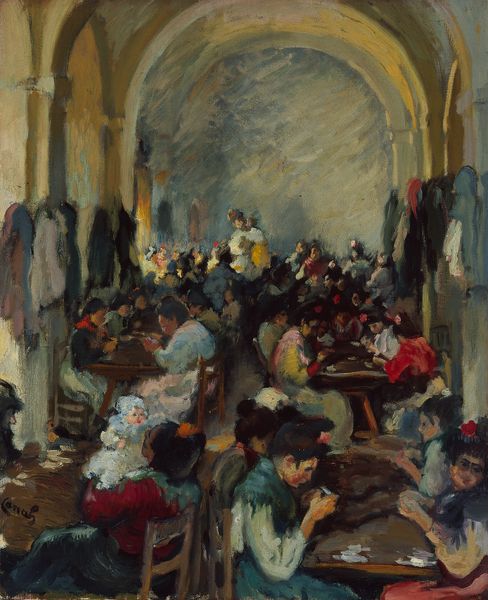
painting, oil-paint
#
portrait
#
impressionist
#
painting
#
impressionism
#
impressionist painting style
#
oil-paint
#
oil painting
#
cityscape
#
genre-painting
Dimensions: 46 x 67 cm
Copyright: Public domain
Editor: Degas's "Dinner at the Ball," painted in 1879 and residing at the Musée d'Orsay, depicts a bustling social scene. The thick brushstrokes and muted colors make it feel both grand and slightly indistinct. I'm curious, what's your interpretation of this work? Curator: Focusing on the materiality of this painting, consider the application of the oil paint. Notice the visible brushstrokes, the lack of precise detail in the figures. How does this rapid, almost impatient technique reflect the fleeting, consumerist nature of social events during the Impressionist era? The ball becomes a commodity, a spectacle manufactured and consumed by the bourgeoisie. Editor: I see what you mean. The lack of detail makes the people seem almost like props within this larger environment, a place that's built to be consumed visually. But why focus so much on the materials used? Curator: The materiality highlights the conditions of its creation and consumption. The paint itself is a product of industrial capitalism, and the way Degas applies it implicates him, and us, in a cycle of production, labor, and spectacle. He is literally *manufacturing* an experience, just like the hosts of the ball. Editor: So, it's not just *what* is painted, but *how* it's painted that reveals the meaning. I never considered that art materials could offer insights into labor practices and economics. Curator: Exactly! By considering the materials and process, we start to understand the complex relationship between art, industry, and social structures. Consider also how this contrasts with traditional academic painting which attempts to disguise the 'labor' involved. Editor: This has really shifted how I view Impressionism. I used to see it as simply pretty scenes, but now I see a critique embedded in the very act of painting itself. Thanks! Curator: Indeed, thinking about process and materials allows us to unearth these hidden narratives within seemingly familiar works. There is so much more to discover in those brushstrokes.
Comments
No comments
Be the first to comment and join the conversation on the ultimate creative platform.
